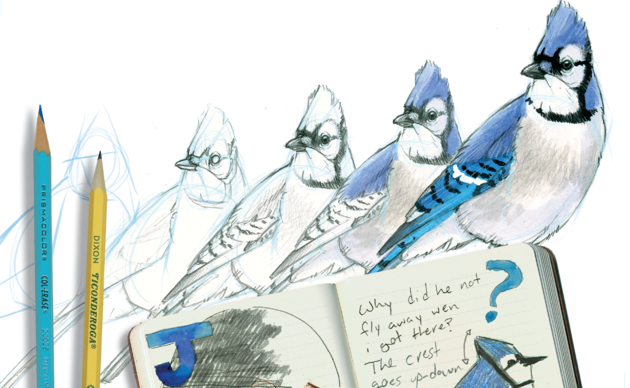Key California Birds on the Audubon WatchList
CALIFORNIA CONDOR (Gymnogyps californianus)
Reduced to just 22 birds in 1988, this raptor is slowly recovering, thanks to captive breeding and the release of individuals in California and Arizona. There are now 302 individuals, including 79 free-flying birds in California. Lead bullets are a critical threat to long-term survival, as fragments poison wild condors that scavenge the remains of hunters’ kills.
TRICOLORED BLACKBIRD (Agelaius tricolor)
A highly social species, this bird is found in freshwater wetlands in the Pacific states, mainly California. With loss of wetland habitat, this species increasingly relies on agricultural fields for nesting, leaving chicks vulnerable to the harvest of hay and other crops. Audubon California is working with farmers to maintain agricultural nesting habitat long enough each season to allow the blackbirds to successfully raise their young – potentially spelling the difference between survival and extinction for this highly specialized bird.
ASHY STORM-PETREL (Oceanodroma homochroa)
Breeding populations are restricted to islands off the west coast of North America. Non-native nest predators and increased gull populations threaten breeding birds, and ocean pollution and overfishing threaten feeding birds. Audubon California is working to establish Marine Important Bird Areas and other programs to save this and many other marine bird species in need of protection.
SNOWY PLOVER (Charadrius alexandrinus)
The population that lives along the Pacific shoreline is federally threatened. Development along beaches, increased beach recreation, disturbance by pets, and increased predation require constant vigilance. Audubon California is supporting chapters in organizing beach surveys to monitor population trends and educating the public to enjoy the beach in plover-friendly ways.
LONG-BILLED CURLEW (Numenius americanus)
The largest shorebird in North America, the curlew winters in the agricultural valleys of California. Estimates of how many curlews are left range from 20,000 to 160,000. Better estimates of how many curlews remain are needed with better understanding about what agricultural types and practices curlews depend. Audubon California and partners conducted a statewide survey of curlews and more than 28,000 birds were counted.
CALIFORNIA GNATCATCHER (Polioptila californica)
This species’ limited range, extending north from Mexico's Baja California to coastal southern California, and its specific habitat requirements, make it vulnerable and a high conservation priority. Burgeoning human populations have fragmented and destroyed suitable habitat for this species in southern California so that it was Federally listed as a threatened species in 1993.
CLAPPER RAIL (Rallus longirostris)
This wide-ranging species has become increasingly rare as the coastal wetlands that it depends upon are developed. Three endangered subspecies, California, Yuma, and Light-footed Clapper Rail, occur in California. Audubon chapters are engaged in the protection of marshlands and coastal habitats throughout California.
MOUNTAIN PLOVER (Charadrius montanus)
One of North America's endemic grassland birds. Once plentiful on the short grass prairies of western North America, this species has declined by about 50% since 1966. These declines are due to alteration of prairie habitat on the breeding grounds. Mountain Plovers winter in California and depend on agricultural fields and practices.
MARBLED MURRELET (Polioptila californica)
Nesting high up in the old-growth conifers of the Pacific coast, these enigmatic seabirds were one of the last North American birds to have their nests discovered. Marbled Murrelets usually nest within 30 miles of the ocean and forage at sea within three miles of the coastline. These birds face a powerful triumvirate of threats--logging, gill-net mortality, and oil spills--and have experienced dramatic population declines in recent years.
LEAST TERN (Polioptila californica)
The western population of this species was down to 600 pairs in 1972. Through concerted effort, it has rebounded to 4,500 pairs in southern California and the Bay Area. Least Terns are endangered because the beaches needed for nesting are in high demand for human recreation and residential development.
How you can help, right now
Get Audubon CA in Your Inbox
Our newsletter is fun way to get our latest stories and important conservation updates from across the state.
Donate to Audubon
Help secure the future for birds at risk from climate change, habitat loss and other threats. Your support will power our science, education, advocacy and on-the-ground conservation efforts.
HOTSPOT: Flyover of California's Birds and Biodiversity
California is a global biodiversity hotspots, with one of the greatest concentrations of living species on Earth.




